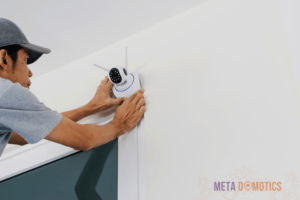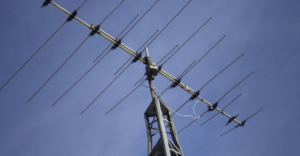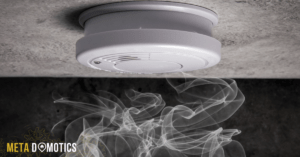
Carbon monoxide (CO) is an odorless, colorless gas that can be deadly if inhaled in large quantities. It is created when any fuel, including gas, oil, kerosene, wood, or charcoal, is burned. If CO poisoning is not detected early enough, it can cause flu-like symptoms and even death.
That is why having a carbon monoxide detector in your home is critical. Carbon monoxide detectors are intended to alert you when dangerous levels of the gas are present in your home and to provide you and your family with peace of mind by monitoring the air quality 24 hours a day, seven days a week.
They are easy to install and require minimal maintenance, making them a simple and effective way to keep your family safe.
We’ll look at why carbon monoxide detectors are important for homes and how they work in this article.
How Carbon Monoxide Detectors Work
Carbon monoxide detectors are designed to detect dangerous levels of carbon monoxide in a home. They measure the amount of CO present using a chemical reaction, and if dangerous concentrations are detected, an alarm will sound to alert you.
The device has one or more sensors which measure the concentration of CO in the air and compare it to pre-determined safety thresholds set by regulatory bodies like OSHA or EPA.
If detected, an alarm will sound to warn you and your family about potential danger due to high levels of carbon monoxide in your home’s atmosphere.
This can help prevent health issues caused by long exposure to gases such as headaches, dizziness, nausea and even death in severe cases.
Additionally, many models also come with voice alerts to better inform occupants faster about impending dangers related to carbon monoxide poisoning for quicker action if needed
Sources of Carbon Monoxide

Carbon monoxide (CO) can be produced by a number of sources both inside and outside the home. Gas stoves or ovens, wood burning stoves or fireplaces, water heaters, portable fuel-burning space heaters, furnaces, car exhausts in attached garages, unvented kerosene space heaters, and even a blocked chimney are all sources of CO inside the home.
Symptoms of Carbon Monoxide Poisoning
Headache: One of the most common early signs of carbon monoxide poisoning is a dull, throbbing headache. It usually happens within a few hours of being exposed and is accompanied by nausea and vomiting.
Dizziness: Exposure to carbon monoxide can also cause lightheadedness, dizziness, confusion, or loss of consciousness.
Shortness of breath: As carbon monoxide accumulates in the bloodstream, it can cause difficulty breathing and chest pain.
Fatigue: Prolonged carbon monoxide exposure can cause extreme fatigue.
Types of Carbon Monoxide Detectors
Electrochemical detector: This type uses a chemical reaction to measure the amount of carbon monoxide present and will sound an alarm when it finds dangerous concentrations.
Optical detector: This type has sensors that look for any changes in light patterns caused by the presence of carbon monoxide gas. It also sounds an alarm if it detects dangerous levels of CO.
Biomimetic detector: This one uses special materials that change color when they come into contact with carbon monoxide, so you can easily see if there are high levels present. Once again, if it detects dangerous concentrations, it will sound an alarm.
Carbon Monoxide Detector Placement
The placement of your carbon monoxide detectors is an important factor in ensuring that you and your family remain safe.
How many carbon monoxide detectors should be in a home − Carbon monoxide detectors should generally be placed near the ground because carbon monoxide is heavier than air and tends to accumulate near the floor.
Each bedroom door, as well as any attached garages and other high-risk areas, should have a detector installed within 10 feet.
It’s also a good idea to have one detector on each floor of your house including the basement, as well as one outside in the garage or near any fuel-burning appliances.
They should also be placed at least 15 feet away from fuel burning appliances like furnaces, water heaters, fireplaces or wood stoves.
Additionally, all carbon monoxide detectors should be tested monthly and replaced every five years.
Maintaining your CO detector is critical to ensuring that it works properly, and the most important step is to test it on a regular basis.
To ensure that the alarm sounds when dangerous levels of carbon monoxide are detected, either press the test button or use a CO gas detector tester.
Furthermore, you should clean and inspect your detectors on a regular basis to ensure that they are free of dust, dirt, or debris that could interfere with the sensor’s function.
The sensor will wear out over time, which is why you should replace your carbon monoxide detector every 5-7 years.
Final Thoughts
In conclusion, carbon monoxide detectors are an important safety device for any home.
Test and inspect your detector on a regular basis, and replace it every 5-7 years, so you know it will work properly when it is most needed.
Carbon monoxide poisoning can be dangerous to your health, but by taking these precautions, you can keep your family safe from this silent killer gas at all times.







